An Interview with Intel CEO Bob Swan: Roundtable Q&A on Fabs and Future
by Dr. Ian Cutress on January 11, 2021 4:31 PM EST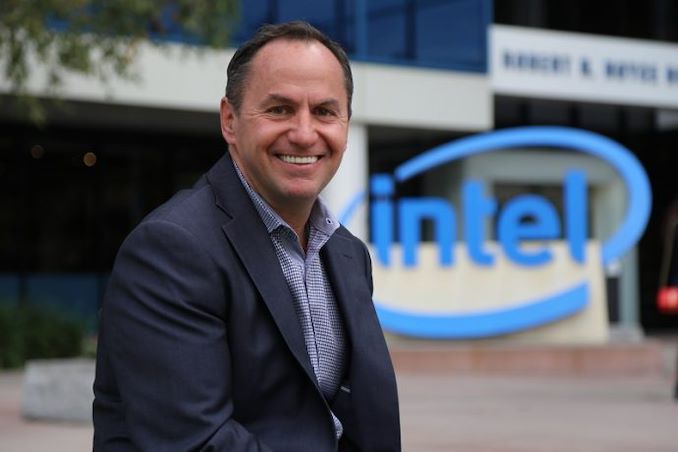
Intel has a very complex year ahead. On the back of what should be strong revenue year for 2020 as well as a widened scope of markets in which it participates, the key fundamentals at Intel such as manufacturing give those that follow the company care for concern. Throughout its existence, Intel’s key market leadership feature has been its manufacturing excellence, so now in 2021, after several high-profile manufacturing delays, what does Intel need to accomplish this year in order to get back on track? I was joined by several other journalists at a rare roundtable with Intel CEO Bob Swan, to ask about Intel’s future.
The Very Rare Opportunity
Access to Intel’s C-Level executives for anything other than financial analysis is a Very Rare Thing Indeed. In a world where Intel’s competitors give the prominent tech press access to their most senior people, Intel was separated from the crowd. So cue my surprise when Intel offered us a seat at a roundtable with CEO Bob Swan, ahead of the company’s announcements at the annual CES trade show and just ahead of the 2020 year-end financial report. Now was a chance to ask Intel's top brass some exciting questions on the record.
Note that this is a roundtable, and not a one-on-one interview. In a one-on-one interview, especially if you have never met before, there is opportunity to build a rapport, start with some easier questions and lead into some tough questions. There is the ability to set a level of expectation, make the person being interviewed comfortable, and potentially increase what level of detail the interviewee wants to go into that particular day, and questions can be re-worded on the fly as needed to get as much information as possible. In a roundtable like this one, it’s quite different. The time available is divided between all the press in the room (CEOs often have hard stops, so it has to be complete on time). When there are six journalists and only 30 minutes to get everything in, it gives each member of the press at best one question each, maybe one-point-five, sometimes zero-point-five. This means as an interviewer you have to select which question matters most to your audience, choose one that they will *actually* answer (very important not to ask something you already know they won’t answer), and dive right in. And so we did. End-to-end, this round table was a 30 minute session, however only the latter 15 minutes ended up being Q&A time.
Bob Swan’s Prepared Remarks
Happy New Year! Thanks for joining us today. Right as I was joining the call someone was saying it was good to have 2020 behind us – I couldn’t agree more! At the same time the start of the year hasn’t been that great just in terms of stuff we have to deal with, but it’s a pleasure to be here.
To start I want to kick off with a little bit about strategically what we’ve been up to which I know all of you were at Architecture Day – Pat (Patrick Moorhead), I know you were at Analyst Day. But I want to start about strategically where we’re going, the progress we’re making, and then a little foreshadowing into what we expect you see on the 11th (the CES press event).
So first, I’ll start with the market dynamics in terms of how we see it. It is, as you say, a good time to be in semis (semiconductors), right? The digitization of everything seems to be accelerating computing, and computing is everywhere. It’s no longer just our PC or our server, but everything seems to need high-performance compute and the PC is essential once again. So they dynamics of the market are extremely favorable.
The second thing I would say is [that we need] to capitalize on these data-centric transitions. It requires, as you know, massive transformation for your clients, and obviously for us, but it’s a massive transformation so that we are seen adapting and developing the new technologies that are going to enable those transformations, like 5G, like AI, like autonomous edge.
And then the third thing is, you know in some ways fortunately but in some ways unfortunately, we’re not the only ones that have noted this massive opportunity in front of us. You know, competition is intense, and they never sleep. That means we have got to be on top of our game, which we have every intention to be, [especially] as we close out last year and enter this year. So we’re excited about the competitive landscape – sometimes I wish it wouldn’t be as intense, but I think it makes us stronger along the way.
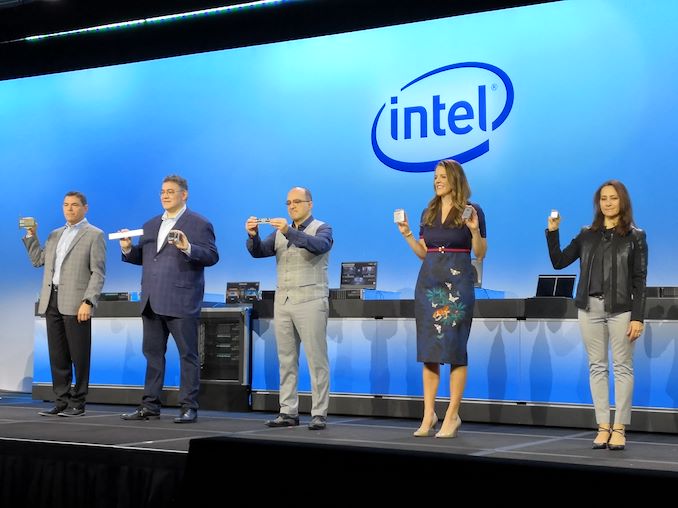
Intel showcasing networking, storage, Optane, compute, 5G
So the market overview is relatively attractive. Strategically what we’ve been talking about for the last couple of years in terms of our role in this market is just to be the trusted performance leader, [one] that takes this insatiable appetite for data and makes that data relevant and actionable by analyzing it, storing it, and moving it faster. [This means that] whether it’s a business or a consumer going through their own digital transformation, our technologies are there to make the data that everybody's getting after increasingly relevant. And the third thing I would say is that we know that for us, to achieve our dreams, that requires us to transform ourselves on three fundamental dimensions.
One, as we characterize it, and Pat I know I read every word you write (only Pat was mentioned by name), but from the CPU to the XPU. As the industry evolves, as workloads evolve, having a variety of architectures, enhancing our core CPU, but also adding additional architectures is increasingly important.
Secondly, you know, from Silicon to Platform. It’s not just the hardware, but how do we couple the hardware with software and with other technologies to build platforms that can delight our customers.
And then the third area for us have been a transformation from what we’ve characterized as the traditional IDM (Integrated Device Manufacturer) to a more modern IDM. This is not to get rid of the IDM, as we think it is a unique advantage of this company. But we know the industry has evolved quite a bit, we know that leveraging design disaggregation and packaging technologies that the IDM of the future is going to be a little bit different than the IDM of the past. That’s the third leg of our kind of transformation.
Then to kind of bring it all together: [it’s] our intensity and focus on both execution and [the] tightly coupled re-energizing the culture of the company. So we’ve moving in a much more nimble way as we see opportunities to grow and [to] innovate, as opposed to protect what we built in the past. So that’s a little bit about what we’ve been up to.
I also want to start with the kind of momentum entering the year. I think you guys, a year ago I flagged you know three fundamental areas that I thought were critical for us to improve execution. One was capacity, to ensure that we have the capacity to meet the demands of our customer base. Second was, once and for all, the ramp of 10nm. Third was to increase the rate of innovation of these multiple/multiplicity of architectures.
So as we enter 2021, you know, we built some really good momentum. Obviously we have a lot more to do, but yeah we’ve added over $20 billion in revenue over the last five years, and we’ve been chasing it, and chasing it is disruptive. So we entered the year (2021) having essentially doubled our capacity over the course of the last couple of years, and we’re going into 2021 you know with a lot more capacity in place, both for 14nm but also for 10nm.
The second area is 10nm itself. It was a year ago that we finally launched it, and during the course of the year going to second generation SuperFin, the biggest internode enhancement in transistor density ever for us. [It] was a big introduction during the course of the year and coupling that with our packaging technology is kind of bringing them to life. [It] was a really important aspect of execution on 10nm.
Then third is the products, and just the rate of innovation. During the course of the year, whether it was beginning the year with LakeField, or 5G SOCs, FPGAs, discrete graphics, oneAPI – the amount of products that we launched during the course of the year was really good momentum. And I would say that maybe most importantly, the Tiger Lake launch during the course of the year, that t ramped on the new node faster than we anticipated. It grew better, the adoption [of Tiger Lake], the designs by our customers was more than we expected. So we enter the year with that momentum kind of behind us, and the opportunity really to scale as we ended the year.
The last thing I [want] to say is about the execution as we exit the year. We launched [the] Ice Lake server product, you know, qualified it at the end of the year, started production of the third generation of Xeon Scalable processors, and will ramp it in the first quarter. So as you know, that was an important launch to kind of complete the portfolio of products that we have, from LakeField at the beginning of the year, all the way to server at the end of the year. So that’s, you know, a little bit about strategically where we’re headed, [and] the momentum we have entering the year.
Just quickly on the things you’re going to hear about at the [press] conference on the 11th. [To] start with, I mentioned the Ice Lake Xeon Scalable. Next year the client business is going to, you know, show more advances and industry firsts for virtually every type of experience in every segment of the PC market. During the year we’ll have four families of processors, from entry to premium, a really good lineup of products during the course of the year. In that lineup we’ll include some real desktop innovation coming in. Greg (Bryant) or Chris (Walker) will showcase two technologies coming to market in 2021, including the 11th Gen Core desktop processor Rocket Lake, as you know, and our next generation processors, Alder Lake, which from our vantage point represents a significant breakthrough in the x86 architecture. So we’re really excited about the innovation on the desktop. So between server, client, mobile, and desktop, we have an exciting lineup of things as we enter the year.
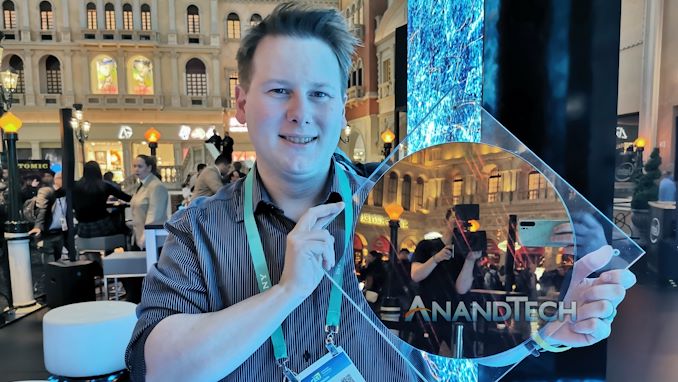
CES 2020, Tiger Lake (10nm SuperFin) Wafer
The second thing we will talk about is Silicon to Platform – we will also enhance our platform offering in the year. We will launch our first ever 11th Gen Core Chromebooks, based on the Evo platform, and we’re going to debut the Intel Evo vPro platform as well, which is going to feature the highest performance business PC platform with the most comprehensive hardware based security.
So [we’re] very excited about going beyond the silicon, the platforms, not just for Chromebooks but also you’re going to hear from Annan how Mobileye is expanding its offering as well. That talk is about expanding autonomous vehicle efforts globally, with four new testing locations [in] Detroit, Tokyo, Shanghai and Paris, in the first part of 2021. [This is] basically demonstrating the ability to have that kind of rapid global deployment by leveraging the proprietary crowdsource mapping technology called RAM, or Road Experience Management. So [we have] really exciting announcements coming from the Mobileye team on the 11th as well.
Just to wrap up: the demand for compute is pervasive. It’s not just the PC or the server, it’s the network, at the edge, in the car, in the retail store, in the industrial environment, and that incredible demand for compute, on billions and billions of devices, is a rich opportunity for us to expand the role that we play in our customer success. We feel like we have good momentum [from] 2020 in entering the year, and we’re excited to demonstrate a bunch of new innovation.
Questions and Answers
Patrick Moorhead, Moor Insights and Analysis: Can you give the latest and greatest on 10nm?
Bob Swan: There are several components to this. Firstly, we have three fabs ramping [up production] now. We’re building capacity for this year and the next couple of years, and both front-end and back-end yields have been progressing as we ramp. We ramped even faster in Q4 2020. With this, as yields increase, unit costs continue to come down, and gross margins get better. But don’t forget it’s not just about the process technology, but also the products we build – I mean, we ramped everything during 2020. At the end of 2020, I think in the Q3 financial call, I said that volume on 10nm was 30% higher than we expected compared to the beginning of the year. We have felt great about our design wins on 10nm, and look to continue ramping 10nm across all three fabs as we exit our financial year 2020, into 2021.
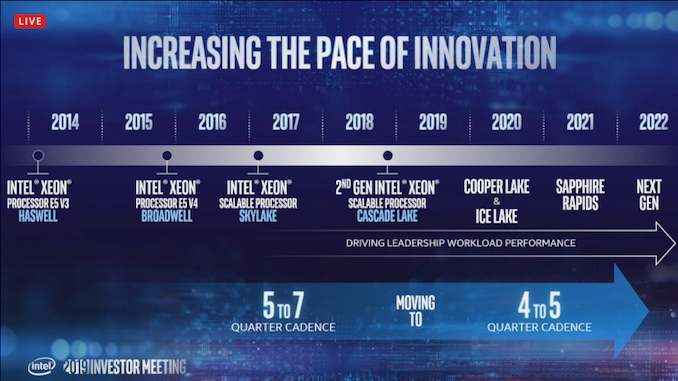
Intel Roadmap, as per mid-2019
Paul Alcorn, Tom’s Hardware: One of the key benefits of Intel is that it manages its own manufacturing supply chain, however recently Intel has discussed using external suppliers for key components. We're moving into an era, due to COVID and other political relations, where the scope for a sustained third-party supply might leave Intel on the back foot should it decide to outsource its market leading products. How does Intel move forward in a future where it blends its product lines with a mix of third-party derivatives, the supply and economics of which will be further removed from Intel's usual control?
Bob Swan: Access to supply has been a critical part of Intel’s product management. A year ago, as we collectively looked into 2020, we expected that the PC market might be grow or contract by about 1%. It felt quite flat, and the demand profile wasn't great. Then as COVID hit, most of the industry thought that the first half of the year was going to fall off in terms of demand. But then in the second half of the year, demand grew like crazy and the mix of Intel’s products changed considerably. As a result, the whole ecosystem scrambled to gain pace, and at Intel we had to react and schedule for that.
For Intel, this is our advantage as an IDM (Integrated Device Manufacturer). While an IDM is still dependent on its ecosystem, it helps being the allocator rather than the allocatee - it means a great deal. If we think about design disaggregation, where we might leverage a third party foundry process, in any discussions that we are trying, even if we don't make those agreements happen, we always have to look at how we preserve the advantages of being a [vertically integrated] IDM. This means the ability to leverage Intel's size and scale, especially to get preferential treatment when allocation decisions are being made. We've got practice in using third party resources for our commodities, and as we plan to expand and use more third party foundries, maintaining and securing the advantages to Intel’s IDM strategy is going to be critical.
Paul Alcorn: Is there scope for Intel to consider sub-licensing leading process node technology from other foundries in order to use in its own manufacturing facilities?
Bob Swan: Possibly. I think the strategically for Intel, the ecosystem has evolved over the last 10 years. If there are ways or opportunities to leverage other industry advancements, then it is going to be very front-and-center for Intel to capitalize on industry innovations. Intel is coming to the realization that we don't have to do all the innovations ourselves. So in that thought we might outsource, we might move to using third party IP, opening up our own manufacturing and become a foundry. Is there a scenario in which Intel might use another’s process technology in our own manufacturing? That's certainly possible. The industry is evolving and we need to leverage that innovation, within our walls or elsewhere, and take advantage.
Mark Hachman, PCWorld: A question on the competition. If I am a PC vendor, I can buy from Intel, I can buy from AMD, or I can go find an Arm chip (or roll my own). With that in mind, what is the competitive advantage of Intel over the competition?
Bob Swan: Competition makes us stronger and helps us to move faster. It’s all about the rate of innovation, and then developing a broad based product offering. This means providing a range of products from intro to premium, and for products to business, to the consumer, for notebooks, for desktops, and offering a predictable annual cadence of leadership. It comes down to Intel’s IDM advantage – at Intel it is the knowledge to the customer base is that we are not going to contain your growth. At Intel we need to have more capacity than needed, and Intel needs to be the allocator and have the inventory to meet the spikes in customer demand. Also on the knowledge – we work with engineers at these companies and co-optimize their products. We're part of their design team, not just the order taker.
Dave Altavilla, HotHardware: Is there an update on the progress for Intel’s higher-end Xe GPUs? How is it going, and how do you see it competing in the gaming or the datacenter?
Bob Swan: This is something that we've had a couple of goes with, as you know, when we started over two years ago. Rather than starting from scratch like we did with Larrabee, it was a case of how do we start but this time with integrated graphics. The process is about driving from integrated graphics to discrete graphics, and leveraging the same design as much as possible (to enable scale up). You saw the progress with Xe in 2020, with the launch of DG1, which we are very excited about. We've not given a date for DG2, but clearly we have strong intentions in this CPU to XPU space where there are multiple architectures needed. Intel is going to invest to expand GPU to entry up the stack over time. We will have real innovation in the next two years
Dr. Ian Cutress, AnandTech: Given Intel's position in market, its outlook for 2021, and where the company currently stands, what matters more: its financial side or its technical side?
Bob Swan: Technical. But they’re not decoupled – one powers the other and vice versa. Our rate of innovation, our rate of products, and our rate of investment helps one to drive the other which feeds back in.
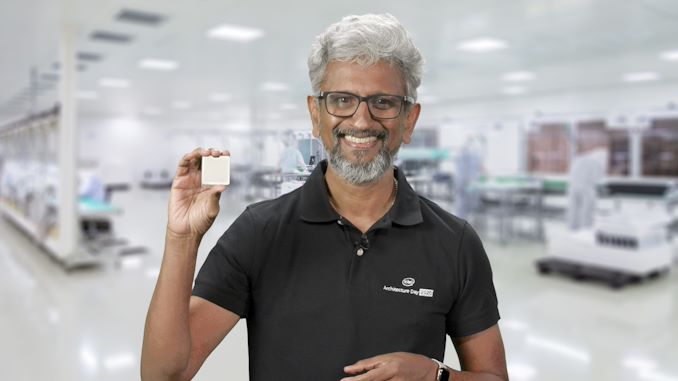
Raja Koduri, Intel SVP and Chief Architect
Dr. Ian Cutress: Intel has had a recent exodus of prominent key technical personal in 2020, such as Renduchintala and Keller. Where does Intel see the future of its technical expertise coming from?
Bob Swan: Don’t forget that Intel has 70,000 engineers! Intel’s background is technical. Our model for the longest time was to hire engineers right out of their college campuses, and grow them within the system*. As the industry has moved on, when we think about new architectures, and the ecosystem still has to be growing from within but also we are bringing in outsiders.
As you know, Jim left for personal reasons. When Murthy left, he was a wonderful executive, but in so many ways it was ‘how to get five engineers in the room when we’re making big decisions, not just one?’ I think it’s the realization that we can get more diverse points of view, more technologists in the room, making big time decisions. As you know we’ve done substantial promotions within the company to fill those rolls, such as Ann Kelleher on technology development, Keyvan Esfarjani in manufacturing, Raja Koduri on company-wide architecture and software, and Josh Walden fills in the Jim Keller type position as we look to fill that role on a permanent basis. We also have Dr. Randhir Thakur from Applied Materials on our supply chain. Having 5 senior, what I’d characterize as brilliant, engineers in that room gives us more diverse thought on the technology and the future. Then there's also the core hardware and software engineers that work for each of them, and I'm convinced we have the best talent, by a long shot, in the world. Our expectations are to continue to have the best talent, and we’ll get it the same way as we have recently, which is from the campuses and the competition.
*Ian: I often address the engineers that have been there 20+ years as Intel ‘lifers’
Final Words from Bob Swan
As a company, it has been a tough couple of years [especially on the technology side]. But coming out of 2020, it will be the 5th best year in a row for revenue. We understand it's all about innovation and execution, and we're excited about what we're going to do for customers in 2021.
Analysis of Bob’s Remarks
Despite the short time to ask questions, there are several points to highlight.
1. Keeping the Fabs
First, it sounds like Intel is almost certainly going to keep its fabs. Bob repeatedly stated that Intel’s key advantage is as a vertically integrated company, and being able to have the resources to scale out production in order to meet demand from customers, as well as deal with spikes in that demand. Obviously the question as to whether Intel will have a sufficiently competitive manufacturing technology to remain in such high demand still remains on the table for this isolated explanation, but our interpretation of this shows that keeping the fabs internal allows Intel to remain agile for its customers supply needs, something that may not be possible when using third party resources.
2. Outsourcing only with preferential treatment
To that, and secondly, the comment Bob has made about only using third party resources such that Intel has preferential treatment and maintains an IDM-like advantage (i.e., similar benefits to that of being vertically integrated). This has significant implications as it boils down to which third party resources Intel might consider using. Intel has a significant financial advantage over a number of its direct competitors in the traditional markets it plays, but for third party foundry, the competitors are different. Apple is TSMC’s lead partner on 5nm and won’t be outbid, whereas AMD and Qualcomm take up most of the 7nm volume now that Huawei is no longer a customer. TSMC has already stated that it isn’t prepared to build out additional operations just for Intel, especially if they would be temporally limited until Intel reaches parity on its own manufacturing. If Intel were to outbid for capacity against AMD or Qualcomm, then it puts severe question marks on the gross margin, something that Bob Swan is very keen to monitor and keep in line with Intel’s historical metrics. The other option would be Samsung, where Intel would have to bid against Samsung itself and NVIDIA for capacity.
3. Intel could sub-license process node tech
Third, that Intel could consider licensing another fab technology and integrate it into its own. To put some perspective on this, all of these fabs (between Intel, TSMC and Samsung), use mostly the same machines to build transistors on wafers. There are only a few companies that make the hardware, and all three have major investment in all the players. The differences in the technology is going to be how those steps are built up, and machine-to-machine ratio, as well as EDA tools in play. But much in the same way GlobalFoundries licensed Samsung’s 14nm for its own use, Intel could do the same, at least in a facility or two. If Intel were to do this, for example on its 7nm by licensing Samsung’s 5nm, it could re-channel research and development teams that were working on its own 7nm over to Intel’s 5nm process, where we expect the company to debut nanoribbon transistors. Dropping its own 7nm and licensing someone else’s technology might be an initial cost, time delay, and impact gross margins for a year or two, but focusing on its own 5nm might be what Intel needs to restart its manufacturing arm. The fact that Bob didn’t immediately swat it away means that it remains a valid option, especially as Intel appears to be committed to continuing to build out its fab technology (as per the first point).
4. Technical matters more to Intel than Financial
Fourth, Bob Swan when asked if technical or financial matters more to Intel, he stated the technical side matters more. I should note that he stated that without hesitation. A question continually asked among a number of analysts is if having a non-technical CEO is the right fit for Intel, especially at a time when Intel’s future seems to be predicated on its technical delays than anything else. But the fact that Bob recognizes that Intel’s technical side is where the company needs to focus gives me more hope. It all comes down to whether Intel can have the right technical people in the right positions being able to make decisions that don’t require months of debate. Which also leads me on to the final part…
5. Not enough voices at the top
Fifth, the comments about Renduchintala took me by surprise. The nature of Murthy’s sudden departure from Intel in July 2020 led to a number of hushed private comments as to what exactly was happening inside the four walls. Suggestions have been raised that he was asked to leave, that he was forced to leave, or that he left as his position became untenable with others. The fact that Bob has stated that Murthy’s departure has enabled the company to add more technical voices to the future of Intel indicates that Renduchintala’s id was perhaps inflexible to commentary from similar level peers. Renduchintala’s hiring was widely promoted in 2015, not only for being a rare circumstance of Intel hiring from outside the company to such a senior position, but also the $8.1m signing on bonus with $17m in additional incentives (culminated in a $27m compensation package in 2019). It was also as a nod to the potential future of Intel, with whispers that Murthy was on the track to the CEO position and could help fix Intel’s process node delays. So the fact that Renduchintala left with little fanfare, along with Bob’s comments today, might imply the split was less than amicable when it came to deciding Intel’s future, at least to the point on the future of the company and how each party wanted to be involved. It sounds like Murthy wanted to go his way and his way only, but Intel’s management wanted more voices in the room to debate those calls.
6. Silent Launch of Ice Lake Xeon
Perhaps this last point is a bit of a big question mark. When a company starts talking about announcements, launches, and availability, the exact position of the product can get a bit murky, because the terms of somewhat used interchangeably. Normally an official ‘launch’ is code for ‘we’ve started selling it and generating revenue’, which is why this is all a bit odd. Intel’s Ice Lake Xeon Scalable product has not had an official launch date and information event, however Bob in this Q&A stated that this 10nm silicon we’ve been waiting for has already been launched. To add confusion to the mix, he also mentions that production is ‘ramping’, which usually means that Intel is enabling high volume production for wider availability. However, the Intel press release today only states that the product is ‘entering production’. It can’t be both – either it is in production already and Intel is selling it, or they’ve started to make it. Normally with these Xeon products, the hyperscalers and big customers act as Intel’s testing ground, and so these customers will have been using the engineering sample hardware for several months already, sometimes in deployed servers. A few years ago Intel made a hubbub about its first 10nm product Cannon Lake (which the company seems to want people to forget about) being shipped for revenue at the end of 2017, however it wasn’t until Q3 2018 where Intel put it in their own NUCs for consumer use. Between the launch, the ramp, the production, and revenue, Intel’s messaging here is unclear. However, it is safe to assume that the big customers already have some form of it up and running.
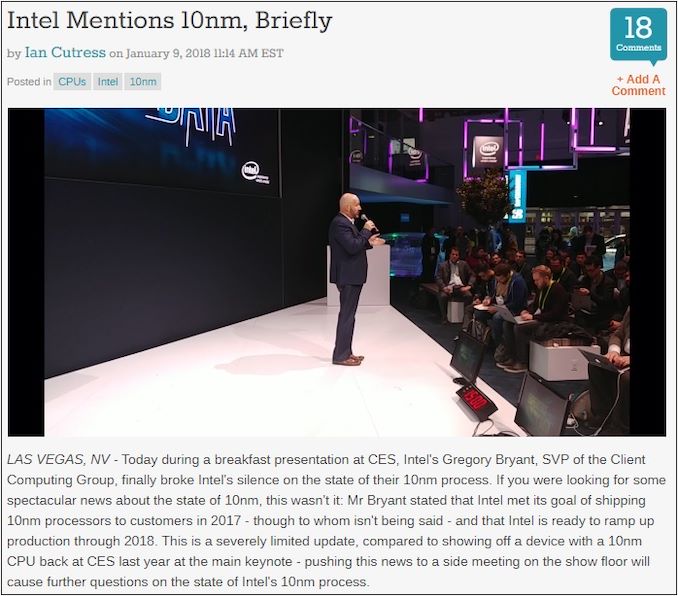
When Intel first announced 10nm was shipping for revenue. Click through for video
Final Words from AnandTech
Whichever way you slice it this was a very interesting call about Intel and the company’s future. This was done before Intel briefed us on its CES announcements, so there might be some cross over as that happens. But I’m glad Intel was able to snare its CEO for some time with the technical press, even if the Q&A time ended up being 15 minutes for 5/6 journalists. We enjoy these chances to have honest discussions about how the head of a company perceives the business they are in, as well as the vision of the company as we move forward. It was a very interesting first talk with Bob, and hopefully we’ll get the opportunity for many more.
Related Reading
- Interview with Intel CEO Bob Swan
- Intel at CES 2021: Overview
- Intel at CES 2021: Press Event Live Blog
- Intel Ice Lake Xeon in Production
- Intel 11th Gen Desktop Rocket Lake Core i9-11900K ‘Preview’
- Intel 11th Gen Tiger Lake-U Boosted to 35W
- Intel 11th Gen Tiger Lake-H with 8 cores
- Intel 11th Gen Tiger Lake Goes vPro
- Intel’s Next Gen Tremont Atom in Jasper Lake for Q1


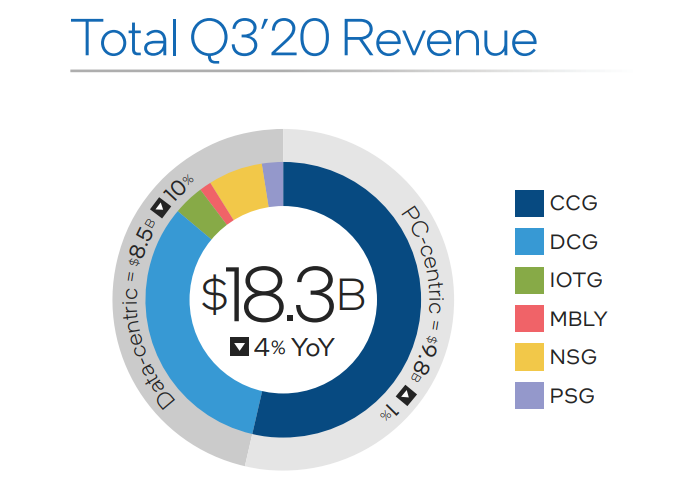
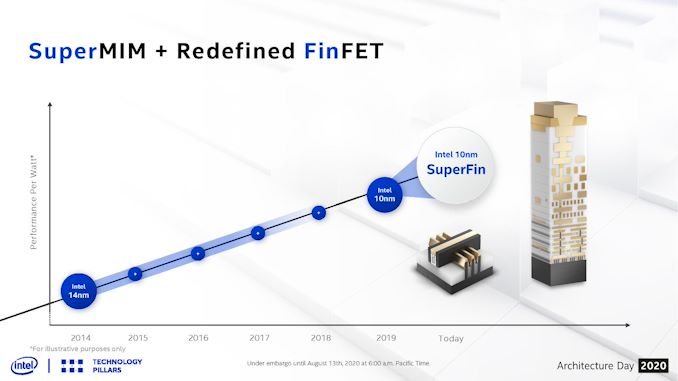
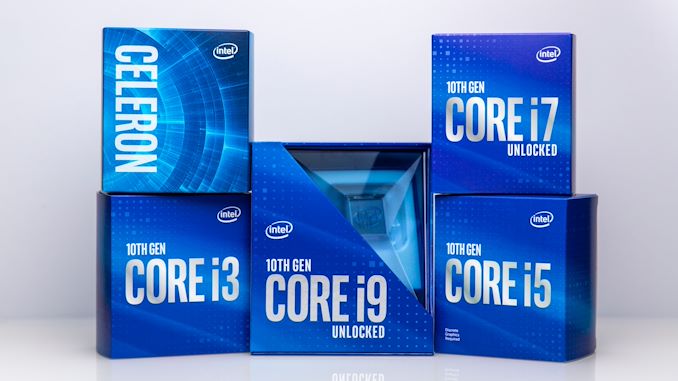








33 Comments
View All Comments
ikjadoon - Monday, January 11, 2021 - link
These were actually pretty good questions. I would've loved to see a question if Intel will ever return to Arm, after StrongARM & XScale in the early 2000s.https://en.wikipedia.org/wiki/XScale
On technical vs financial: I wonder, if Bob Swan said "technical" because he knew a question came from Ian Cutress, Senior Editor at AnandTech. 😅 Nonetheless, I hope that's true. Intel's reputation has been severely bruised and it will likely never heal back to its former monopolistic glory, I think, versus the-nearly-identical-story a decade ago with Prescott (with IPC instead of fabrication).
So, I hope these open-ended interviews (relatively speaking) with senior Intel executives becomes more common: kudos to whatever marketing executive approved this. Even famously-guarded Apple did *many* interviews after the M1 release, some nearly an hour long with 1:2 YouTube podcast-style.
Of course, this interview comes on the heels of new product launches, so if 10nmSF flops again for desktops, then we'll see if Intel will come out of the cave--half-joking.
JayNor - Monday, January 11, 2021 - link
What 10SF desktop have they announced?lmcd - Monday, January 11, 2021 - link
Alder Lake?Deicidium369 - Monday, January 11, 2021 - link
SF is Tiger LakeESF is Golden Cove
bwhitty - Monday, January 11, 2021 - link
Alder Lake now confirmed for Enhanced 10SF.Arsenica - Monday, January 11, 2021 - link
Intel continues betting in the wrong technologies and that's due to the mismanagement of maybe 70 people that drags the performance of the other 70K (and decreasing) engineers.The current debacle was brought by using the same-old approaches to try to achieve very lofty goals. From choosing which semiconductor technologies to apply to the execution of Exa-scale projects Intel bet in the same old approaches and it is being surpassed by its competitors in every metric (as things are right now AMD is scheduled to deliver the Frontier 1.5 ExaFLOPS supercomputer before Intel is even half ready to deploy its 1 ExaFLOP Aurora system).
Those errors come from the Krzanich era but so far Swan has shown little appetite for change.
JayNor - Monday, January 11, 2021 - link
"same-old approaches"Aurora combines:
Sapphire Rapids ... 10esf, pcie5, cxl, ddr5, AMX tiled matrix processing, Golden Cove cores
Xe-HPC ... 16 tile GPU with HBM, Rambo Cache
looks to me like AMD's Frontier hardware will be a generation behind this.
Deicidium369 - Monday, January 11, 2021 - link
6 x 16 tiles GPU - each 65535 CoresEach HPE/Cray Sled is 2 x Sapphire Rapids and 6 x Xe-HPC (393,216 cores total)
Spunjji - Tuesday, January 12, 2021 - link
Yet another defensive response that isn't actually replying to the stated criticism."as things are right now AMD is scheduled to deliver the Frontier 1.5 ExaFLOPS supercomputer before Intel is even half ready to deploy its 1 ExaFLOP Aurora system"
vs.
"looks to me like AMD's Frontier hardware will be a generation behind this."
Who cares if it's a "generation behind" something that's a day late and a dollar short?
PaulHoule - Tuesday, January 12, 2021 - link
AMX?I think the point of AMX is to waste a lot of die area so it is easier to cool the chip. Like SIMD instructions you are going to face a fractured market where the support costs for handling the 2.8% of people who have one set of instructions and 1.7% of people who have another set of instructions makes it likely that the instructions won't get used most of the time -- so Intel might as well fuse them off so that you are guaranteed to get the power and thermal benefits of having dead space on the die.
If you picked up a linear algebra textbook you might think people GEMM a lot in scientific computing but in real life they just don't. AMX might help for AI inference in 2021 but probably by 2025 people will be using sparse binary representations or 4-bit ints or who knows what. (e.g. gate the carries with a mask and it's easy to make an added that adds variable length packed bits)
Then they insult our intelligence by renaming OpenCL to "OneAPI" and think we'll be fooled into thinking it's better.
They aren't going to listen to us but someday they'll have to listen to the bankruptcy judge.